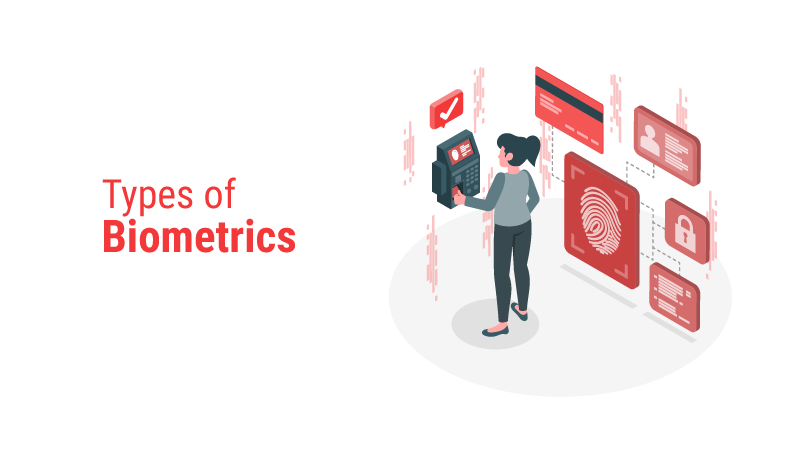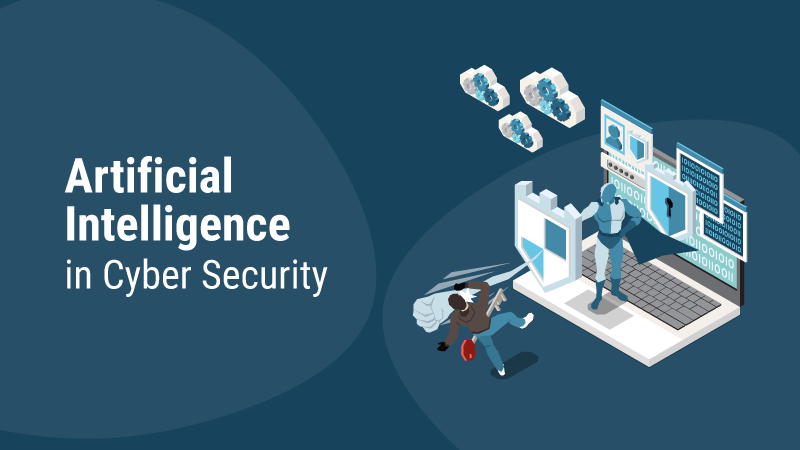Types of Biometrics

Introduction
Biometrics refers to the measure of biological or behavioral characteristics that helps in identifying individuals. The biometric system, on the other hand, analyzes a person’s physical or behavioral traits and recognizes whether the individual is a genuine or fake user. Fingerprints and facial recognition are the most commonly known biometrics but there are other various types of biometrics used as security features to identify and authenticate people. Biometrics are designed in different forms and for different purposes including security, fraud prevention, gaining access, and many more. Moreover, there has been rapid development in the software used to gather biometric data.
Types of biometrics
As mentioned before, there are different kinds of biometrics that mainly fall under 2 categories: physiological biometrics and behavioral biometrics. Let us take a deep dive into them:
Physiological Biometrics
Physiological biometrics are taking an individual’s physical characteristics as an input to recognize identity.
Fingerprints
This is one of the most commonly used and oldest forms of biometrics and it uses the measurement of your unique finger ridges to identify an individual. Once the print is captured, the image is used to obtain a specific digital biometric template with the help of advanced algorithms. The template is analogized with existing or new scans to identify the match.
Finger/hand veins
The blood vessels under the skin of a human finger or hand have a unique pattern (formed by the veins and vessels that take blood to the heart) and this authentication technology works on the unique pattern formed by the veins and vessels. The infrared lights penetrate the skin, where they get imbibed into the deoxygenated blood and a specific cam device captures the digitized picture of the data and then saves or uses it to verify identity. All this makes it harder to hack this scan.
Iris recognition
The color and pattern of the iris vary in individuals. The pattern of the iris and color is different for each individual. It is the colored part of the eye with a circular opening circular in the center. The muscles that shape the pupil of the eye authorize the passage of light into the eye. The identity of an individual can be verified accurately by the biometric devices as they take measurements of the unique muscle folds in the eye.
Facial recognition
Another commonly used and oldest form of biometrics. This technology requires only a digital camera and facial recognition software. Facial recognition software takes measurements of the face like the distance between both eyes, the distance between forehead and cheekbones, etc. Once the data is collected, a sophisticated algorithm converts it into a facial sign that is encrypted. Facial recognition only requires a digital camera and facial recognition software.
Voice recognition
Voice recognition technology comes under both types of biometric authentication – behavioral and physiological. Physiologically, the sound emitted by an individual helps in identifying the shape of the vocal tract, such as the nose, mouth, and trachea. When it comes to the biological side, the pronunciation, variations in tone, movement, etc. are taken into account. After combining data from both biometric types, a precise vocal signature is created. In this type, there are chances for inconsistencies due to sickness or many other factors.
DNA matching
Human DNA contains information about lineage, race, and health conditions for specific diseases. DNA matching uses the personal physical sample of an individual with his/her consent and is employed as a tool for personal identification to authenticate his/her identity. It is the only existing type of biometrics that is capable of tracing family origin or bloodline. In this method, the personal samples collected include saliva, hair, semen, and blood that contains STRs (Short Tandem Repeat sequences) which confirms the identity of a person after making a comparison between other STRs in the database.
Behavioral biometrics
Behavioral biometrics studies and measures behavior patterns or body functions. Here are some of the behavioral biometric forms:
Gait
Gait refers to a mix of cyclical and coordinated movements that cause a person to move. Human gait is considered a unique feature to recognize a familiar person. Gate Biometrics maps patterns through computer-based imaging and then converts the recorded data into an arithmetic problem. This type of biometric is the best option for large-scale surveillance as it can easily recognize distant people.
Lip movement
Just as a deaf person tracks the movement of the lips to interpret what people are saying, biometric lip movement authentication analyzes and maps the movements of the muscles around the lips precisely, to identify if they are following the desired pattern. Such lip motion sensors often ask users to pronounce passwords and record associated lip movement to facilitate access.
Signature recognition
This biometric measures factors such as pressure exerted on the pen, spatial dimensions, and pen stroke in applications (offline and online). The measurements are tracked by a digital tablet and generate a biometric profile automatically using the data, for future authentication.
Keystroke
Keystroke Dynamics records the rhythm while entering a password. It measures the time taken to click each key, the delay between keys, and the number of characters typed in minutes. Keystroke patterns improve security and take basic passwords to another level.
Wrap up
Every person is unique as well as different. Even if takes identical twins as an example, they also have behavioral patterns and physical characteristics that make them unique. Biometric technology uses these unique characteristics for identity verification and security enhancement. Since biometric access control systems have carriers of information with them, it offers great convenience for users as information will not be lost or forged. Different from the password and username combination, it is very difficult to initiate unauthorized access to documents or data if you are using biometric credentials such as face recognition, or fingerprint scan. This can avoid data breaches to a longer extent and that makes biometric systems very much more reliable than any other security option. These different types of biometrics make it simpler, faster, and more precise to secure identity verification.
Get Started with our Security ServicesBlogs by Category
AppForms Artificial Intelligence Blockchain Call Centers Chatbots Cloud Computing Data Management Design Digital Marketing Digital Transformation Enterprise Applications FinTech Insights LowCode Development Microsoft Mobile Apps News Office 365 Robotic Process Automation Security SharePoint Software Development Web ApplicationArtificial Intelligence in Cyber Security

2024-05-23 19:05:42